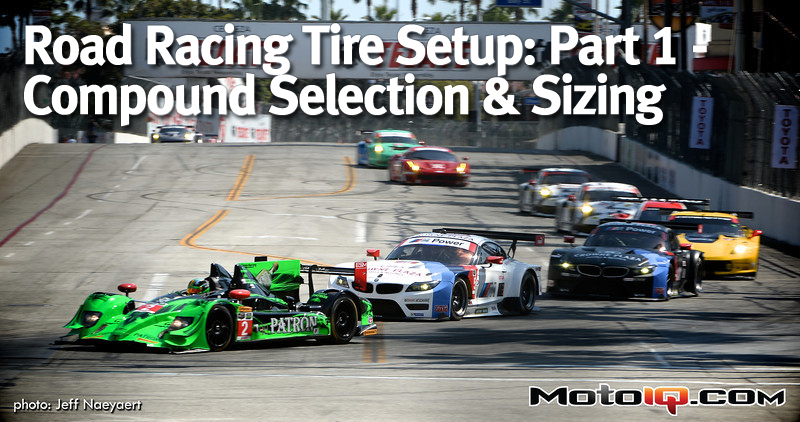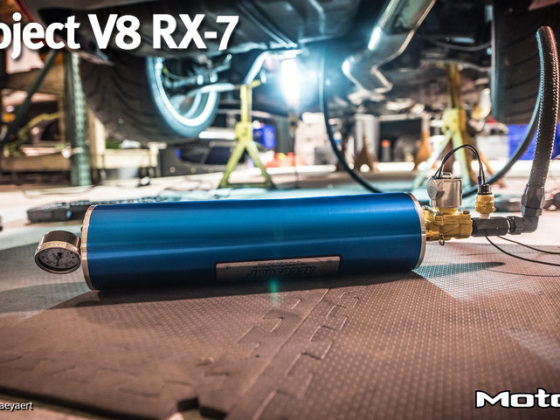,


Before you go running out there and measuring just how much tire you can cram into your wheel wells, you should also keep in mind that there is a point of diminishing returns on tire width to vehicle weight. Running 335s under a 1900lb H4 CRX (single cam, no VTEC 1.6) is probably going to hurt lap times more than it’ll help. Those 335s may help somewhat with overall lateral grip, but the featherweight CRX is only going to exert so much pressure on the tires. The contact patch is the reason here. Tires are round, except where they touch the ground at the contact patch. The contact patch’s size and shape are determined by the weight of the car, the inflation pressure of the tire and the size of the tire itself. At the same inflation pressure, a tall and skinny tire will have a longer and narrower contact patch than a short and wide tire. Why does this matter? While the contact patch won’t grow very much, it will change shape, and that shape, as with all things tire-related, is a compromise. A wider contact patch may have more lateral grip, but may also have less longitudinal (braking and acceleration) grip, and that puny 1.6L’s hamsters just aren’t likely to muster enough velocity to take advantage of all that tire. In addition, that 335mm wide tire will most certainly weigh more, with the majority of that weight in exactly the worst spot for it to be. Factor in rolling resistance, a lack of ability to get the tires up to operating temperature, and aerodynamic penalties, and they all conspire to increase lap times, not reduce them. Generally speaking, most of the cars raced by MotoIQ and its readers (sport compacts with under 250whp) are best served with less than a 275mm tire, with 245-255mm being the sweet spot.

The next consideration with tire sizing is what it’s going to do to your gearing. Wearing out the 335mm reference (see what I did there?), it’s going to be hard to find a 23-24” tall 335mm wide tire, and nothing saps straight line performance like screwing up your gearing from running tires too tall. Try to run something close to stock overall diameter, but there are benefits to running different diameters. For the time attacker, running a shorter overall tire may be a cheap fix to help with gearing and braking, but will sacrifice tire longevity. Conversely, running a taller overall tire will lengthen gearing, but the additional circumference will allow the tire to last a lot longer before fading away. With Project G20, running Toyo Proxes RRs in the 225/50R15 instead of 225/45R15 allowed us to battle the entire session with far less attention being paid to tire management.

Now that you’ve got your tires, time to mount them. Before heading down to the tire shop, however, careful attention needs to be paid to mounting procedures. Most tire shops (hopefully) know how to mount directional tires, and which side should face outwards, but some tires like the Toyo Proxes RRs run on Project G20 Racecar need specific mounting based on location and driven wheels.
Pay attention to Toyo’s recommended mounting scheme for your vehicle. There are different combinations for FWD, RWD and AWD. Here, the front right tire is mounted with the DOT code facing outwards on our FWD car.
Since many of us live in the Great Frozen North (not everyone’s perfect) and prepare for the race season during the winter time, special care must be taken to ensure R-compound tires are stored properly in cold weather (below 15°F). The rubber compound that makes these tires work so well under racing conditions make them terrible tires in cold weather. Since the compounds have been optimized for higher temperatures, these tires lose a lot of flexibility at lower temps, even to the point of failure. To ensure that no problems occur during cold weather, it is best to keep the tires stored off of the car and inflated to half of normal operating pressure. Do not roll the car on cold tires and make sure to store them for at least 24 hours at temperatures above 68°F prior to use, mounting, dismounting or other heavy use. For further instructions or information, see this article on cold weather storage .
Running through the myriad of tires available to you can be a daunting task. With the series that have a spec tire, this is a nice respite from the decision making, but also highlights car set up and care even more. For the series that have the freedom of tire selection, you can tailor the tire to your specific driving style and preferences. Stay tuned for next time when we run through all the methods to eke performance and longevity out of your tires on the track.
Sources



